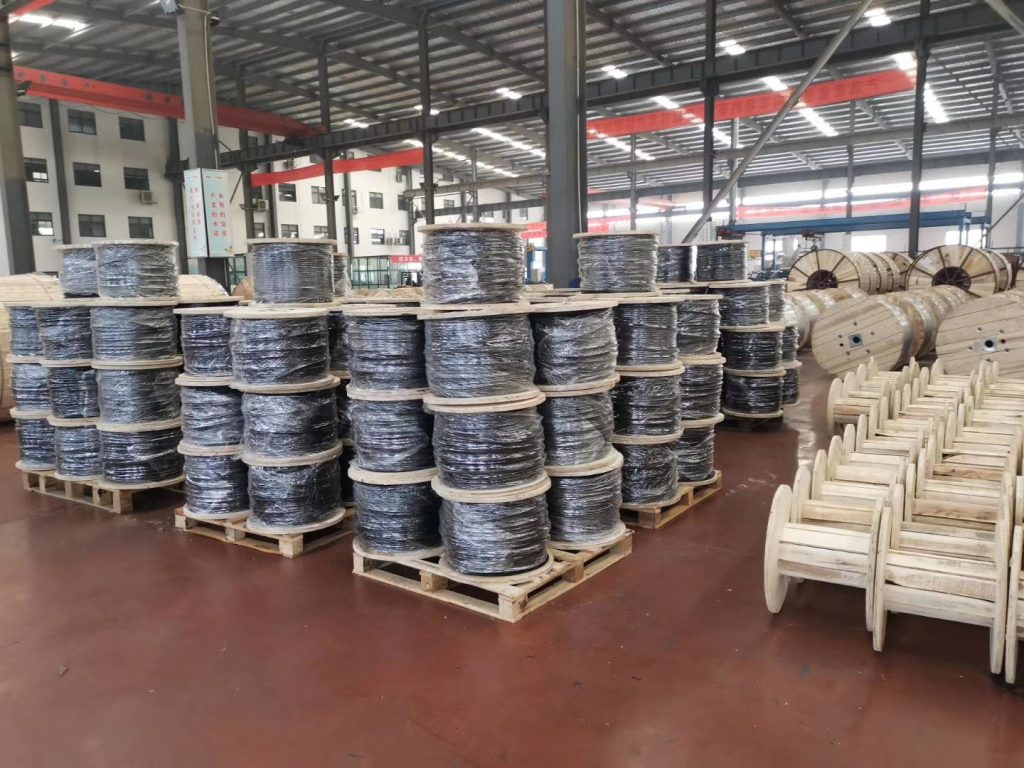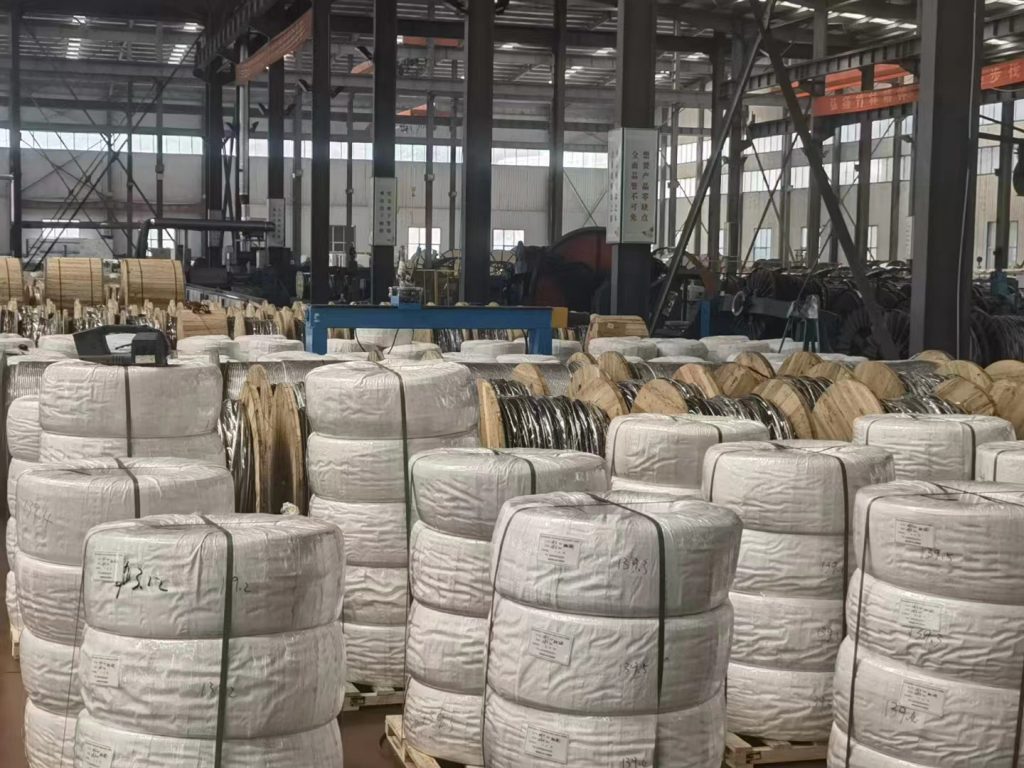The product packaging methods of wire and cable products includes coil packaging, coil packaging or artificial flexible packaging.
Loop packaging: the packaging method for finished wires using a loop forming machine and corresponding packaging materials according to the process requirements or the length specified by the customer.
Reel packaging: The finished wire and cable is packaged in a cable reel according to customer requirements.
Manual flexible packaging: According to customer requirements, the finished wire and cable products that do not need to be loaded on cable reels are manually packaged. Wire packaging identification: name, model specification, cable reel quantity: refers to the need to correct and fix the main body of the disk, repair the damaged wood of the main body of the disk and paint the text.


Wire packaging materials Packaging materials include: plastic packaging film, plastic tape, braided tape (bag), cable reel. General requirements for packaging Whether it is pallet packaging, ring packaging or artificial flexible packaging, it should be neatly packed and properly packed. According to the characteristics, commerciality and engineering of the product, choose the appropriate packaging material as the cladding. At the same time, choose the appropriate packaging (woven bag, cable drum), which requires clear and correct labeling to ensure traceability.
According to the requirements of product protection strength, easy to use, convenient for mechanical loading and unloading and transportation, etc., choose the appropriate packaging technology and packaging method. Product packaging must be inspected and qualified before it can be put into the warehouse or shipped from the factory. Each factory package comes with a product certificate and test report. For customers who have special packaging requirements for wire packaging, technical standards will be issued according to the requirements, and relevant departments will be packaged according to the standards.
Bare wire and bare conductors products in wire packaging refer to wires without insulation and sheath, mainly including three types of bare single wires, bare stranded wires and shaped wires. Copper-aluminum single wire: including soft copper single wire, hard copper single wire, soft aluminum single wire, and hard aluminum single wire. It is mainly used as semi-finished products of various wires and cables, and a small amount is used in the manufacture of communication wires, motors and electrical appliances. Bare stranded wire: including hard copper stranded wire (TJ), hard aluminum stranded wire (LJ), aluminum alloy stranded wire (LHAJ), steel cored aluminum stranded wire (LGJ), mainly used for overhead laying. Annealed copper stranded wire (TJR) and annealed aluminum stranded wire (LJR) are mainly used for the connection between electrical equipment and electronic equipment or components. The specifications of the above strands range from 1.0 to 300mm2. The dimensions of the steel-reinforced aluminum strand (LGJ) are indicated by the nominal aluminum section/nominal steel section. It is the most commonly used wire on distribution lines. The larger the cross-section of the steel core, the stronger the strength of the wire. In addition to ordinary steel-cored aluminum strands, there are steel-cored aluminum alloy strands, aluminum-clad steel-cored aluminum strands, anti-corrosion steel-cored aluminum strands, and expanded steel-cored aluminum Twisted wires, double-capacity wires, gap-type wires, etc.
The packaging box manufacturer designs and manufactures to remind everyone that the letter B in the wire packaging represents wiring, the letter V represents the insulating material polyvinyl chloride, and 4 represents a conductor cross-sectional area of 4 square millimeters, which means that PVC insulated wiring uses 4 square millimeters of wire. The cross-sectional area of commonly used BV wires ranges from 0.5 to 185. The larger the cross-sectional area, the smaller the resistance of the conductor and the larger the current allowed to pass. Of course, if there are higher requirements for wires due to the use environment or other reasons, you can also use environmentally friendly wires (insulation materials have little impact on the environment), flame-retardant or fire-resistant wires (70 degrees to 105 degrees).
The letter R in the wire packaging represents softness, the first letter V represents the insulating material polyvinyl chloride, the second V represents the sheath insulation material is also polyvinyl chloride, 3 represents the number of conductor cores is 3 cores, and 2.5 single core conductors The cross-sectional area is 2.5 square millimeters, which means PVC insulated and sheathed 3-core 2.5 square flexible cable.
Sheathed wires are mainly used in electrical appliances, instruments and electronic equipment, power lines, control lines and signal transmission lines. The number of cores is 2 to 5, and the cross-sectional area of the single core conductor is 0.12 to 6, etc.
1. The packaging of the cable should meet the moisture-proof requirements under shipping conditions;
2. PE bags for packaging should be heat-sealed or self-sealed;
3. For cables with easily oxidized connectors, necessary desiccant should be used in the inner packaging, and the packaging of the desiccant should ensure that it will not be damaged during storage and transportation.
Mobile/Whatsapp:
+8618339938759Email:
[email protected]Get A Free Quote
Submit Request
PDF Request